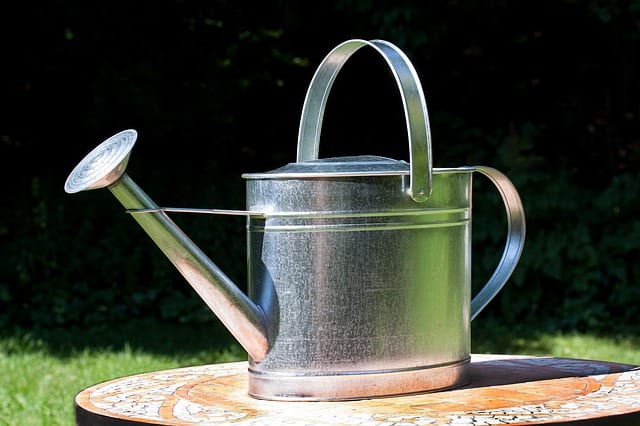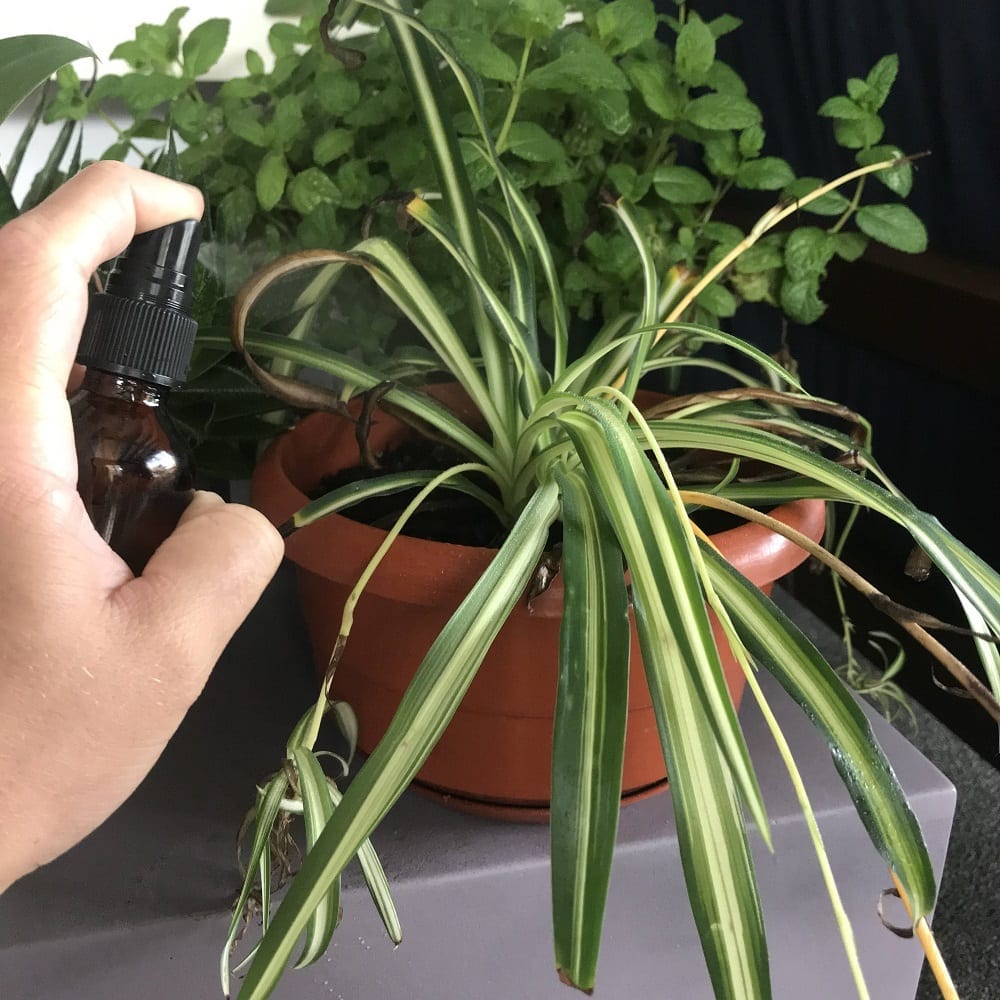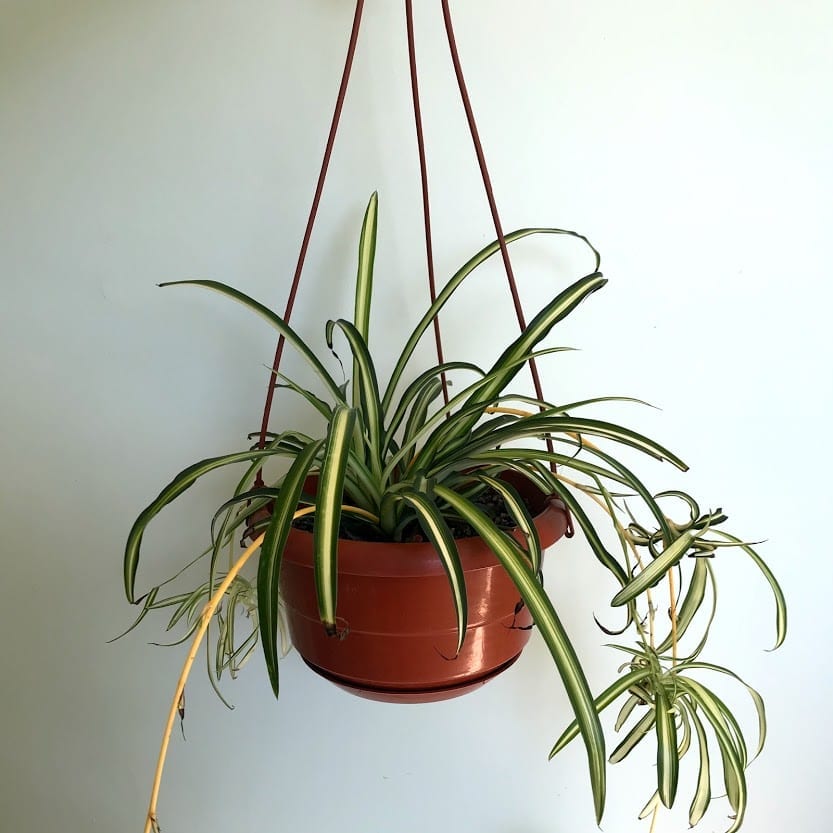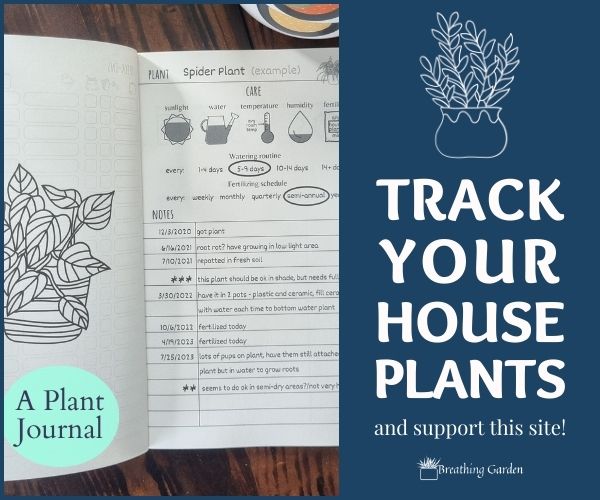Healthy leaves aren’t normally brown! If you’re thinking this, you are not alone! Spider plants can be fairly finicky, and need the right living conditions to survive in. So why the spider plant brown tips on the leaves?
*This post may include affiliate links. When you purchase items from these links, we will receive a small commission, at no extra cost to you, to help support this website. Thank you for your support! Read more ->
There are a few reasons this could be happening, which is another thing that makes it tricky!
Here are 5 reasons your spider plant may have brown tips, and luckily you can try and fix the problem to make it a healthy happy plant again! Mostly these revolve around water, as spider plants are native to subtropics.
Related: 5 Spider Plant Varieties, Air Purifying Plants
Inconsistent Watering

Having a routine for watering your spider plant can be important, as both over and under watering can lead to brown tips of the leaves! Be sure to check the soil with your finger to see if the top inch is wet/damp before watering! If it’s dry, water. If it’s not, don’t water.
Overwatering
Overwatering can contribute to the leaves having brown tips as well as other problematic factors like root rot, which when the roots are in distress can also create the brown tips.
Make sure, before watering, to check how the soil feels before watering. If it’s still wet from the last watering, skip watering it this week.
Also, ensure that the soil is well- draining, ensuring the roots don’t sit in water. Make sure the pot you’re using has drainage holes in the bottom to let the water leave the pot so that the water doesn’t build up.
Root rot can also be a cause of brown tips, as well as leaves dying. If the soil is completely soaked and is not drying out, repot the plant with fresh soil.
Underwatering
This is what makes spider plant brown tips confusing is that not only can it mean too much water, but it can also mean the plant isn’t getting enough water. Again, check the soil. If the top inch is dry, give the plant a good watering, until you see the water coming out of the drainage holes.
This plant can withstand less water than more, so err on the side of underwatering rather than overwatering your plant.
Also keep in mind that depending on the weather and the season, your plant watering habit may change (even with indoor plants!) The cooler, shorter days will require less water than on warmer summer days. This may change from watering once a week to watering once every few weeks.
Chemicals In The Water

Keeping up with talking about water, the spider plant is also known for being picky with what it drinks. Giving it water with too much fluoride or chlorine can also cause spider plant brown tips.
Chlorine can easily be removed using a water filter, like a Brita filter, or boiling the water (and letting it cool) or even just allowing the water to sit out overnight. Try using water that’s had the chlorine removed before moving on to finding fluoride free water, and see if that helps the leaves lose their brown tips.
If this still isn’t working, you may have to look for fluoride free water to test out on your spider plant to see if that helps with the brown tips.
Not Enough Humidity

Spider plants like to stay in a humid environment, so not only are the roots getting enough humidity, but also the air around them and the leaves. Simply spray them occasionally with water, or try one of these easy techniques to raise the humidity for your spider plant!
This is one of the main causes for brown tips on a spider plant, as you may be giving them enough water to drink, but it can be a dry environment and you may want to move them to a different room, like the bathroom to give them more humidity.
Too Much Sun

As these are a subtropical plant, they are used having a canopy of leaves covering them from direct sunlight all day long, with just light filtering through creating a bright environment.
This is the ideal light condition for your spider plant as well! Have it in a bright spot, but without getting direct sunlight.
Start by checking the soil and see if giving it more or less water will help. Then try adding more humidity to the air. One of these ideas should help your plants stay healthy and keep the brown leaves on your spider plant from occurring again!
Also cut off the dead ends with sterilized scissors or pruning shears to ensure the leaves stay healthy after noticing the browning tips!



